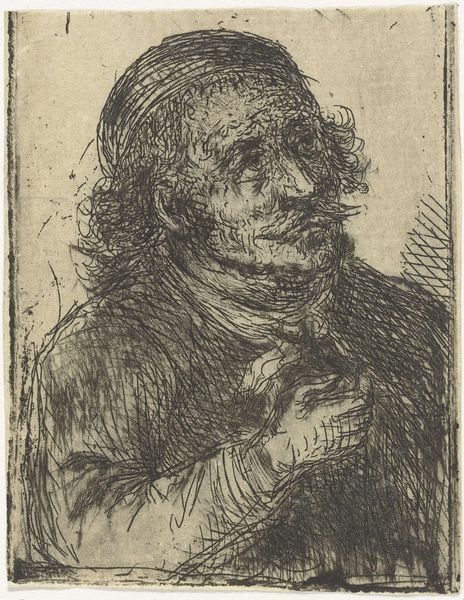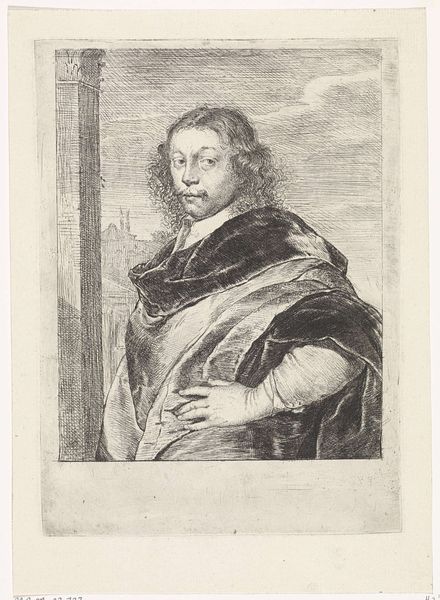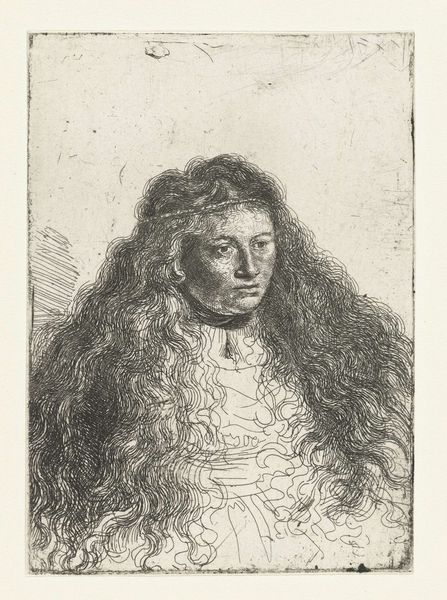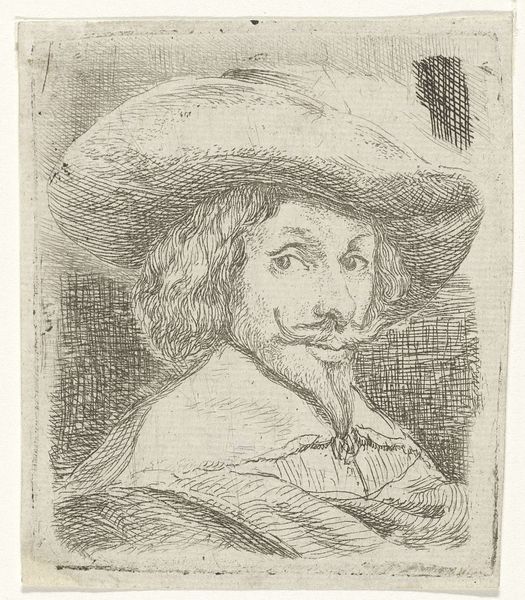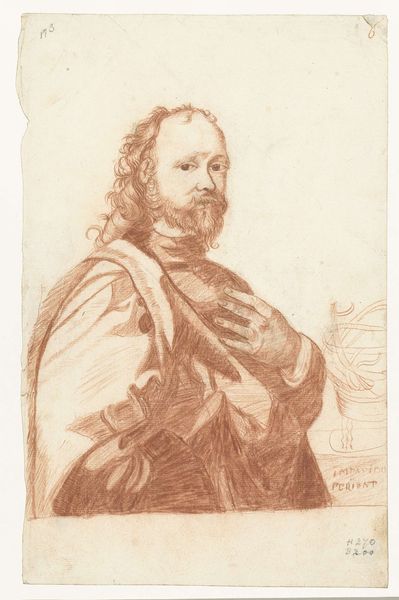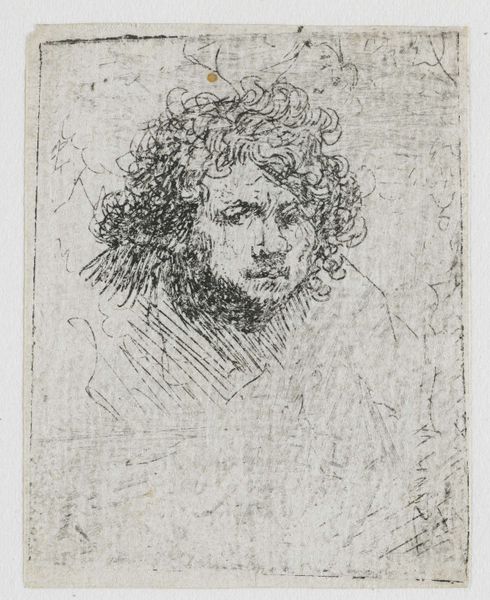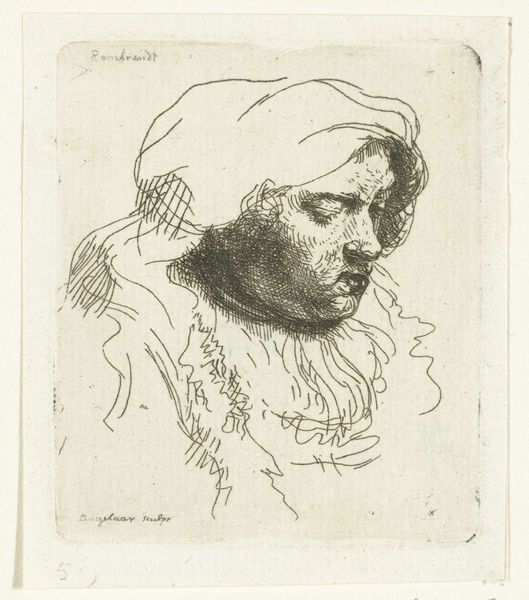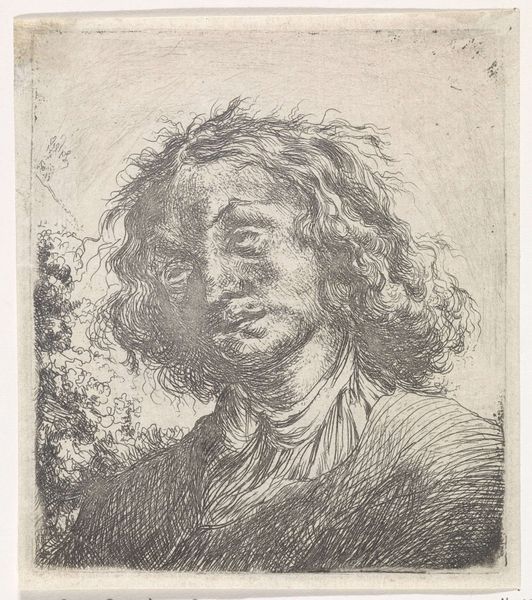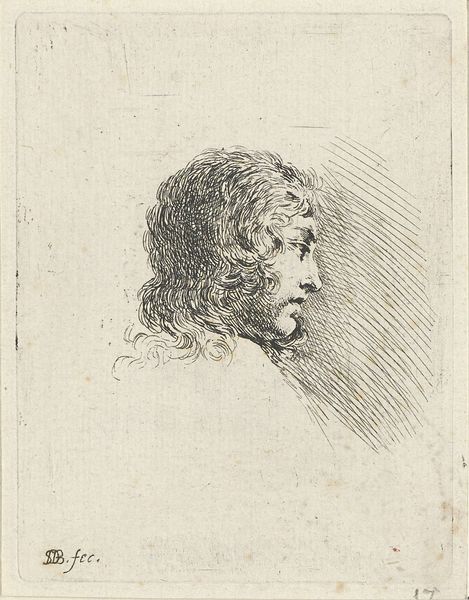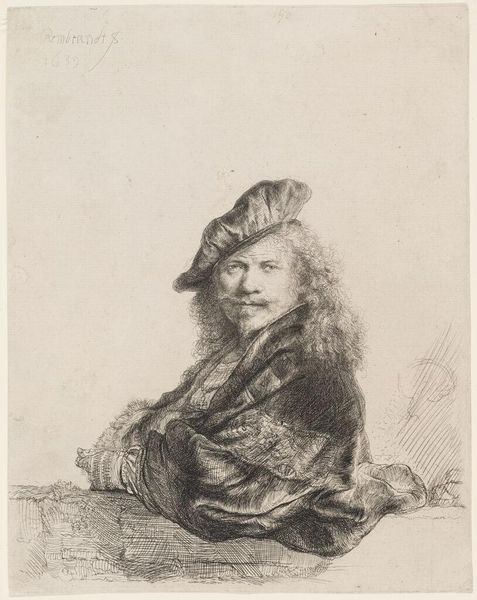
print, etching
#
portrait
#
baroque
# print
#
etching
#
figuration
Dimensions: height 165 mm, width 123 mm
Copyright: Rijks Museum: Open Domain
Curator: Before us, we have "Portret van Frans van Mieris (I)," an etching created by Carel de Moor II, sometime between 1665 and 1738. It resides here at the Rijksmuseum. Editor: The first impression is somber. The figure emerges from a loosely etched background, seemingly draped in heavy fabric, yet the lines themselves have a delicate quality. Curator: Indeed. The very act of etching introduces the concept of artistic labor, and this particular work plays on contrasts in its execution. Note how De Moor's technical prowess with the etching needle renders textures – the swirling hair against the flat planes of the face. Observe the use of hatching and cross-hatching that give form to the sitter's features and the voluminous drapery. Editor: The subject, Frans van Mieris, was a notable painter himself, known for genre scenes and portraits. I'm interested in the circulation of images, how De Moor, through this print, could make van Mieris’s likeness available to a much broader audience than a painted portrait ever could. Prints democratized art to a degree, expanding access to those outside elite circles. Curator: Absolutely. We also see the skillful use of line to create a sense of light and shadow. Look closely at how the varying depths of the etched lines give volume to the cloak and animate the image with what might be interpreted as tenebrism. This visual drama elevates the figure above mere representation. It invites the viewer into the depicted subject’s own interiority. Editor: The sitter's hands too, they seem consciously placed. This level of intentionality also suggests the value associated with handcrafted artworks within Dutch society at that time. They become symbolic of skilled making, especially poignant considering van Mieris's own profession. Curator: Perhaps this close study allows us to appreciate how much an image is designed, with its construction carefully planned and executed to communicate across generations. Editor: Yes, to understand that what appears spontaneous is underpinned by systems of artistic creation, material availability, and social practices.
Comments
No comments
Be the first to comment and join the conversation on the ultimate creative platform.
